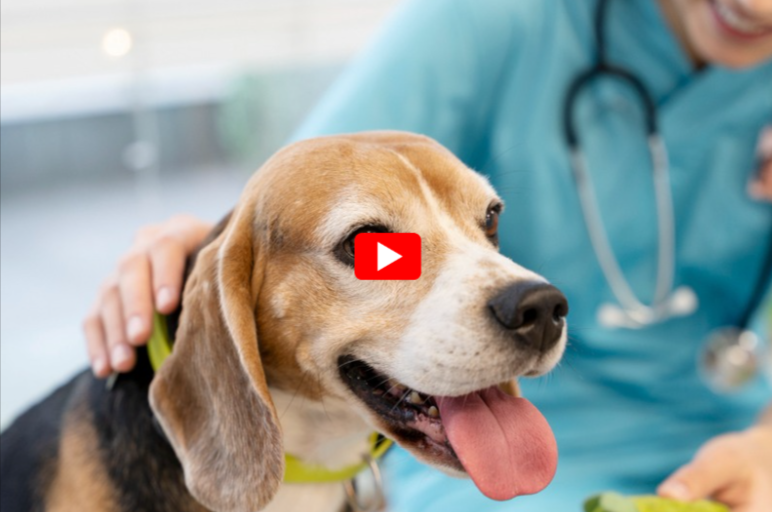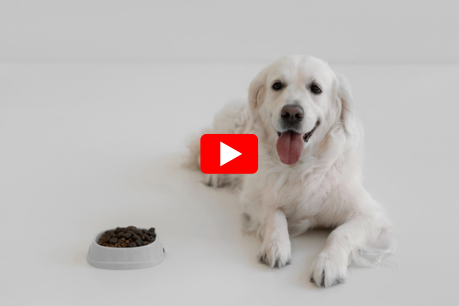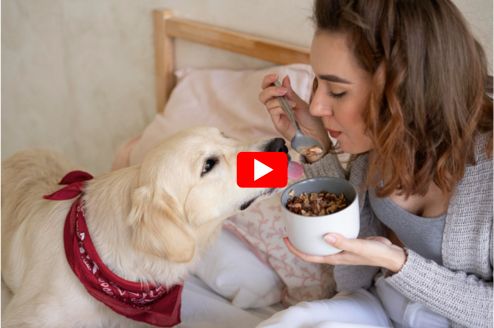Ringworm On Dogs: Treatment & Prevention Guide!
Ringworm is a common fungal infection affecting dogs of all ages and breeds. Despite its name, ringworm is not caused by a worm but by a fungus that invades the skin, hair, and nails.
This infection is highly contagious, not only between animals but also from dogs to humans, making it important for pet owners to recognize the signs and take prompt action.
Ringworm on dogs is a contagious fungal infection causing circular hair loss and itching. Early treatment with antifungals helps dogs recover quickly.
In this comprehensive guide, we will cover everything you need to know about ringworm on dogs: what it is, symptoms to watch for, causes and risk factors, diagnosis, treatment options, and practical prevention tips to keep your furry friend and family safe.
What Is Ringworm in Dogs?
Ringworm is a fungal infection caused by dermatophytes, a group of fungi that feed on keratin, a protein found in skin, hair, and nails.
The most common dermatophytes that infect dogs include Microsporum canis, Microsporum gypseum, and Trichophyton mentagrophytes.
When the fungus infects a dog’s skin, it damages the hair follicles and outer skin layers, resulting in characteristic ring-shaped patches of hair loss, redness, and scaling. The infection can affect any part of the body but is often seen on the face, ears, paws, and tail.
Causes and How Dogs Get Ringworm
Dogs can contract ringworm through direct contact with an infected animal or person. The fungal spores can also survive for months on contaminated objects such as bedding, grooming tools, furniture, and soil. Therefore, dogs can become infected by:
-
Grooming or playing with another infected dog or animal
-
Contact with contaminated surfaces or objects
-
Exposure to soil or environments harboring fungal spores
-
Weakened immune systems, making them more susceptible
Young puppies, older dogs, and dogs with compromised immune systems are more vulnerable to ringworm infection.
Symptoms of Ringworm on Dogs
Ringworm in dogs presents with a variety of symptoms, which may vary depending on the severity and location of the infection. Common signs include:
-
Circular patches of hair loss: These often have a red, inflamed border and clear or scaly center, creating a ring-like appearance (hence the name “ringworm”).
-
Itching and scratching: Some dogs may experience mild to moderate itching.
-
Scaly, crusty, or flaky skin: Infected areas may have dandruff-like flakes.
-
Brittle or broken hairs: Hair around the infected spots may become fragile and break off easily.
-
Redness and inflammation: The skin around lesions may appear irritated or inflamed.
-
Thickened or discolored nails: In some cases, ringworm can affect the claws causing changes in their appearance.
However, some dogs may carry the fungus without showing any visible symptoms but can still spread the infection to others.
Diagnosing Ringworm in Dogs
If you suspect your dog has ringworm, it’s important to consult a veterinarian for a proper diagnosis. Vets use several methods to confirm ringworm infection:
-
Physical Examination: Checking the pattern of hair loss and skin lesions.
-
Wood’s Lamp Examination: A special ultraviolet light is used to detect some types of ringworm that fluoresce greenish under the light (mostly Microsporum canis).
-
Fungal Culture: A sample of hair or skin scrapings is cultured to identify the fungal species, which is the most definitive diagnostic method but may take up to 2 weeks.
-
Microscopic Examination: Direct examination of hairs or skin scrapings under a microscope for fungal spores.
Accurate diagnosis helps guide the best treatment plan for your dog.
Treatment Options for Ringworm in Dogs
Ringworm is usually treatable with a combination of topical and systemic antifungal therapies. The duration of treatment can range from several weeks to a few months, depending on the severity.
1. Topical Treatments
-
Antifungal creams, ointments, or shampoos: These are applied directly to affected areas to kill fungal spores on the skin and hair. Common topical agents include miconazole, clotrimazole, and lime sulfur dips.
-
Medicated baths: Weekly antifungal baths can reduce spore contamination and speed healing.
2. Oral Medications
For widespread or severe infections, oral antifungal drugs prescribed by a vet are often necessary, such as:
-
Itraconazole
-
Griseofulvin
-
Terbinafine
These medications help clear the infection from within and prevent re-infection.
3. Environmental Decontamination
Since ringworm spores can persist in the environment for months, it’s crucial to thoroughly clean and disinfect your home to prevent re-infection:
-
Wash pet bedding, blankets, and toys in hot water regularly.
-
Vacuum carpets, furniture, and floors frequently.
-
Use a diluted bleach solution or commercial antifungal sprays to disinfect surfaces.
-
Limit your dog’s access to contaminated areas during treatment.
Is Ringworm Contagious to Humans?
Yes, ringworm is zoonotic, meaning it can spread from dogs to humans. Humans can contract ringworm by touching an infected dog or contaminated objects. In people, it causes itchy, red, ring-shaped rashes usually on the hands, arms, or other exposed areas.
Children, elderly people, and those with weakened immune systems are particularly susceptible. If you or a family member develop suspicious skin lesions, seek medical advice promptly.
Preventing Ringworm in Dogs
Preventing ringworm involves reducing your dog’s exposure to fungal spores and maintaining good hygiene practices:
-
Avoid contact with infected animals or wildlife.
-
Regularly clean your dog’s living area, bedding, and grooming tools.
-
Bathe your dog with antifungal shampoos if advised by your vet.
-
Keep your dog’s immune system healthy with a balanced diet, exercise, and routine vet check-ups.
-
Quarantine any new pets until you are sure they are free from ringworm or other contagious diseases.
When to See a Veterinarian
If you notice any suspicious circular patches of hair loss, scaling, or itching on your dog, it is important to visit a vet immediately.
Early diagnosis and treatment can prevent the infection from worsening and spreading to other pets or family members.
Conclusion
Ringworm on dogs is a common fungal infection that can be effectively treated with timely veterinary care.
Understanding the causes, symptoms, and treatment options will help you manage your pet’s health and prevent the spread of this contagious infection.
Regular hygiene, environmental cleaning, and early vet visits are key to protecting your dog and your household.
References Link
- Ringworm in Dogs
https://www.petmd.com/dog/conditions/skin/c_dg_dermatophytosis
- Remedies for Dog Ringworm
https://www.webmd.com/pets/dogs/dog-ringworm-remedies
- Skin Problems in Dogs
https://www.webmd.com/pets/dogs/ss/slideshow-skin-problems-in-dogs
- Dog skin disorders
https://en.wikipedia.org/wiki/Dog_skin_disorders
.



